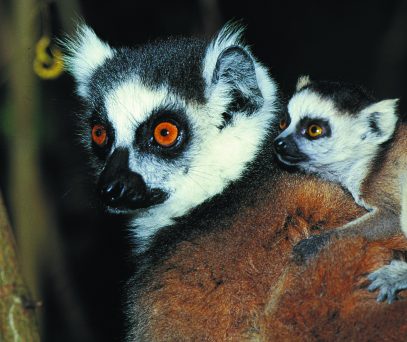
Andohahela
On the plan
VISIT US
Depending on your means of transport :
- Ground Transportation
🚗 Accessible via the RN 13 for the Lafa, Tantelisarotra, Tsimelahy, and Mangatsiaka circuit
🚗 Accessible via the RIP 118 Ranomafana for the Manangotry circuit
- Maritime transport
🛳️ There is no direct maritime access to the park, but you can reach Fort-Dauphin by boat.
- Air transport
✈️ There are no direct flights to the park, but you can reach Fort-Dauphin by plane.
🗓️ When to visit Andohahela ?
🚶♂️ The park is open all year round!
🌞 June to November: the ideal time to observe wildlife—lemurs, birds, and endemic species—in the best conditions.
🦜 August to November: perfect for birdwatchers.
🌧️ December to April: lush nature and flowering plants.
🌿 Activities available in Andohahela
🥾 Hiking
⛺ Camping
🦜 Bird watching
👣 Guided tours
📚 School trips
🚶♂️ Nature excursions🏕️ Reception facilities
🏠 Visitor center: Located at the park entrance, it welcomes visitors upon arrival and provides them with information to help them organize and prepare for their visits.
⛺ Camping site with tents for researchers: located in Mangatsiaka.
⛺ Camping site with 04 tents: for night visits and researchers. Both campsites are equipped with showers and toilets and areas for eating and cooking; located in Tsimelahy.
🦉 Interpretation center: For welcoming visitors and purchasing entrance tickets to visit the park, located in Ankazofotsy.
💰 Fees and rates
📄 See all rights and fees applicable to the reserve in the reference document below.
ℹ️ Essential information
To make the most of your visit, bring:
🥾 Appropriate clothing: hiking boots, light but covering clothing.
🦟 Mosquito protection: repellent, cream, or mosquito spray.
🔭 Binoculars: ideal for observing animals from a distance.
💧 Useful accessories: water bottle, hat, sunglasses.📜 Rules of conduct
🚫 No touching animals or buying forest products
🎫 Always have a ticket with you on each visit
👨🏫 Guided tours with a certified guide are mandatory
The circuits
| Tours | Summary | Difficulty | Duration | Tour plans |
|---|---|---|---|---|
| TANTELISAROTRA | Landscape, lemur, birds, medicinal plant, reptile, transitional forest | Average | 3h30 | |
| LAFA | Trihedron palm (endemic species of Andohahela), Lemur, reptile, medicinal plant | Easy | 2h | |
| TSIMELAHY | Lemurs, birds, reptiles, medicinal plants, baobab, natural swimming pool, botanical tour | Average | 2h | |
| MANGATSIAKA | Cultural site, crocodile, waterfowl, fishing eagle, reptiles, lemurs, varied plant life, lakeside landscape | Average | 1h30 |






